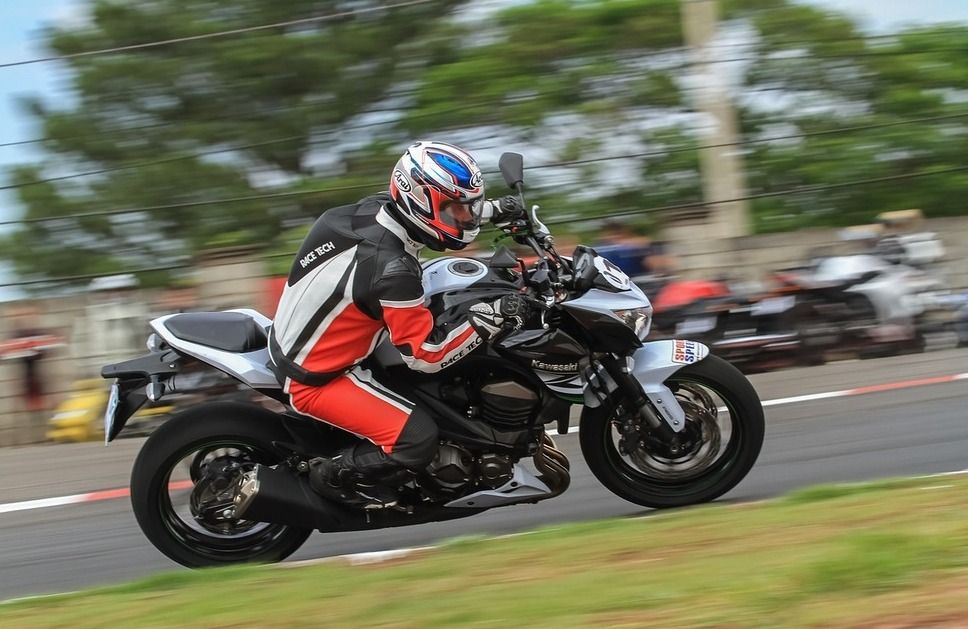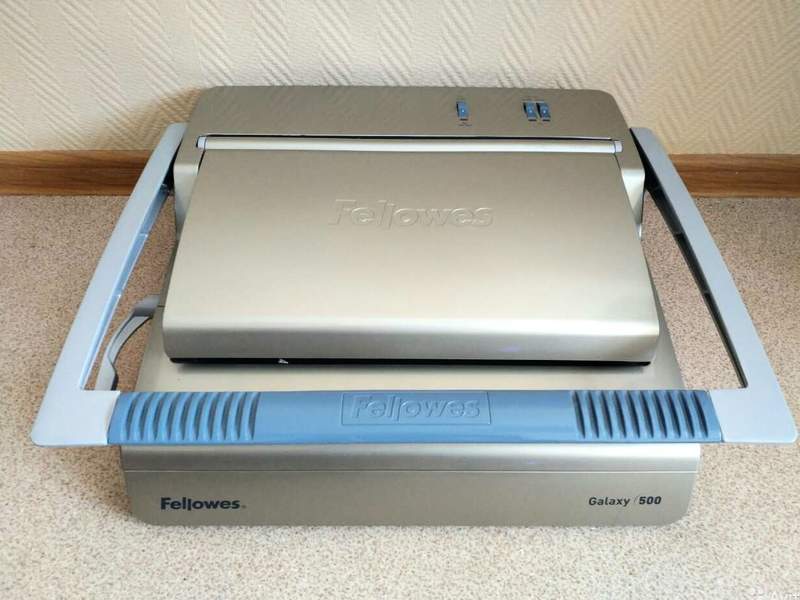DJI Osmo Pocket and Xiaomi FIMI PALM review and comparison
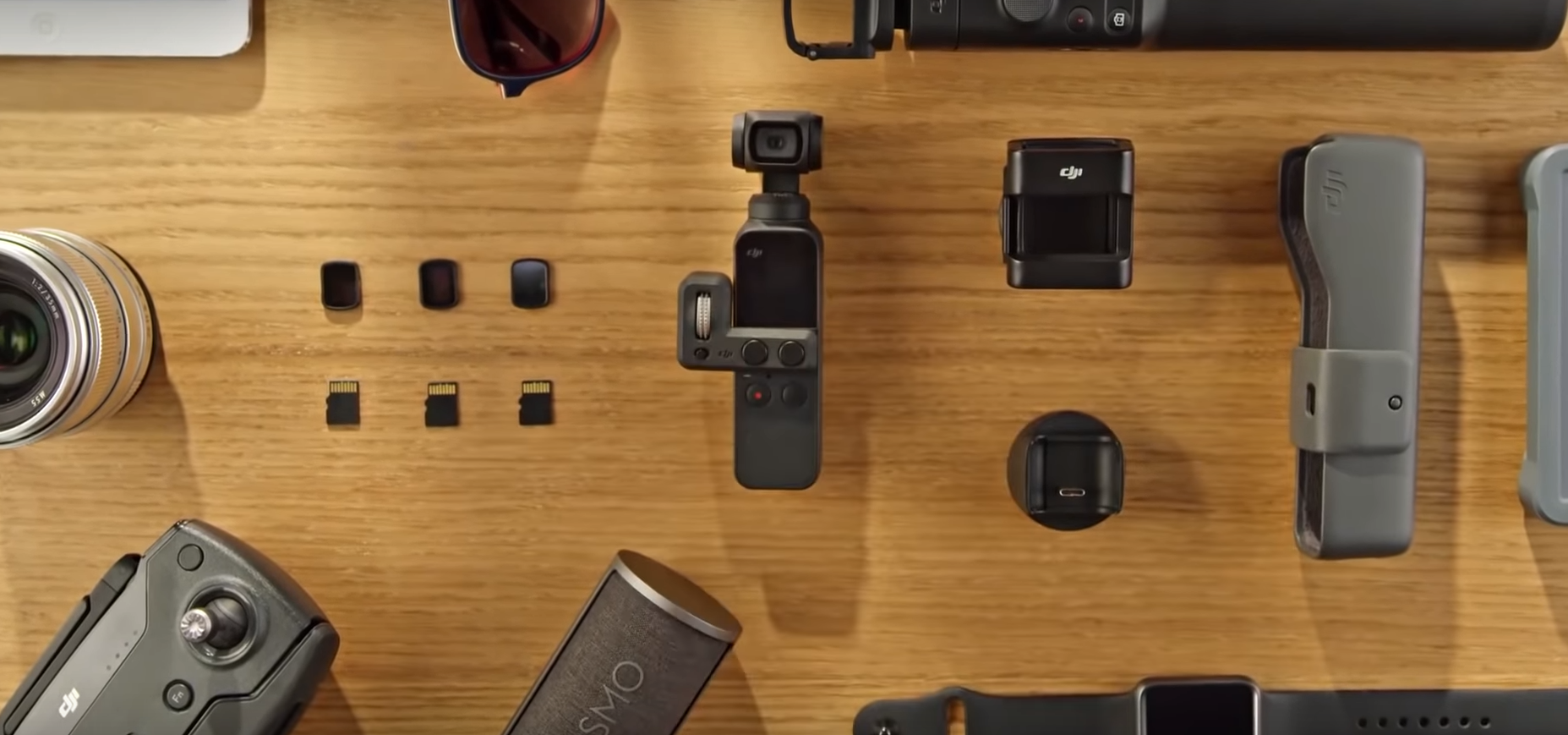
Today, more and more people are engaged in outdoor activities, travel and simply share their experience with others through blogs and YouTube channels. Of course, there is a need for high-quality video recording equipment, as the requirements for content are growing. And although the quality of smartphone cameras in 2020 is very high, the difference between a narrow-focus device and amateur photography is still too noticeable. And if earlier good equipment had price tags that were unaffordable for many novice video bloggers, now competition and a variety of models allow you to choose a pocket camera for any budget. By the way, the sizes of the devices themselves have significantly decreased, and support for many useful technologies has become available.
Analyzing the camera market in 2020, it's pretty easy to highlight the main favorites - the DJI Osmo Pocket and Xiaomi Fimi Palm. The DJI device is older, has a lot of fans and a wide variety of gadgets to improve performance. At the same time, Fimi Palm can be called a novelty that made a splash, providing great features at a lower price. By the way, many people say that Xiaomi simply copied the popular DJI novelty and it really looks like the truth, but this hardly worries an ordinary user.
Review and comparison of DJI Osmo Pocket and Xiaomi Fimi Palm will allow everyone interested in purchasing a pocket camera to evaluate the main features, advantages and disadvantages of the models, as well as understand what is the difference between the two devices. And also to answer the camera's question, which company is better for beginners and professionals.
For quick reference, it is recommended to read the table below - it contains the main characteristics of the cameras, which significantly reduces the time to choose:
| Model | Fimi PALM | Osmo Pocket |
|---|---|---|
| Sensor: | 12 megapixels | 12 megapixels |
| Viewing angle: | 128 ° | 80 ° |
| Maximum video resolution: | 4K / 30fps | 4K / 60fps |
| Bit rate: | 100 Mbps | 100 Mbps |
| Screen: | 1.22 inch | 1.08 inch |
| Battery: | 1000 mAh | 875 mAh |
| Weight: | 120 g | 116 g |
| Dimensions: | 127 x 31 x 23 mm | 122 x 37 x 29 mm |
| Ports: | USB-C connector | USB-C and Lightning connector |
| Built-in Bluetooth and Wi-Fi: | Yes | Not |
| Operating time from one charge: | up to 240 minutes | up to 140 minutes |
| Cost: | about 200 $ | about $ 300 |
Brief comparison
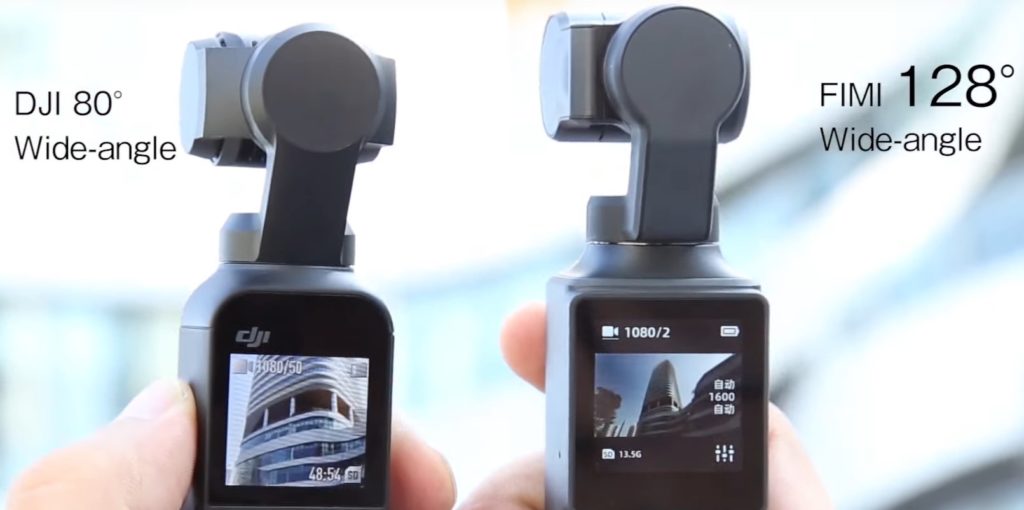
Speaking of the DJI Osmo Pocket and Xiaomi Fimi Palm, we can confidently say that both devices are perfect for vloggers and just active people, because they are based on gimbals, which is a miniature copy of professional studio equipment. It should be said right away that they are viewed exclusively as assistants or as an addition to the main arsenal of an advanced director. Their compactness and versatility allows them to be used in conditions with limited space or the impossibility of using professional devices. By the way, these models will definitely be appreciated by travelers - this device will quite pass for the main one, if the main parameter is the minimization of things necessary on the road.
If you answer the question - which device is better in 2020 - then despite the popularity of Osmo Pocket, you should pay attention to Fimi Palm. Yes, it is almost completely copied from the brainchild of DJI (with significant modifications) and is as cheap as possible, but this does not prevent it from producing excellent video performance, practically not inferior to analogs. In defense of the Osmo Pocket, we can say that it is more reliable, which is not surprising given how many years DJI has been developing cameras for drones and drones.
Video about comparing two models - DJI Osmo Pocket VS Xiaomi FIMI PALM:
Design
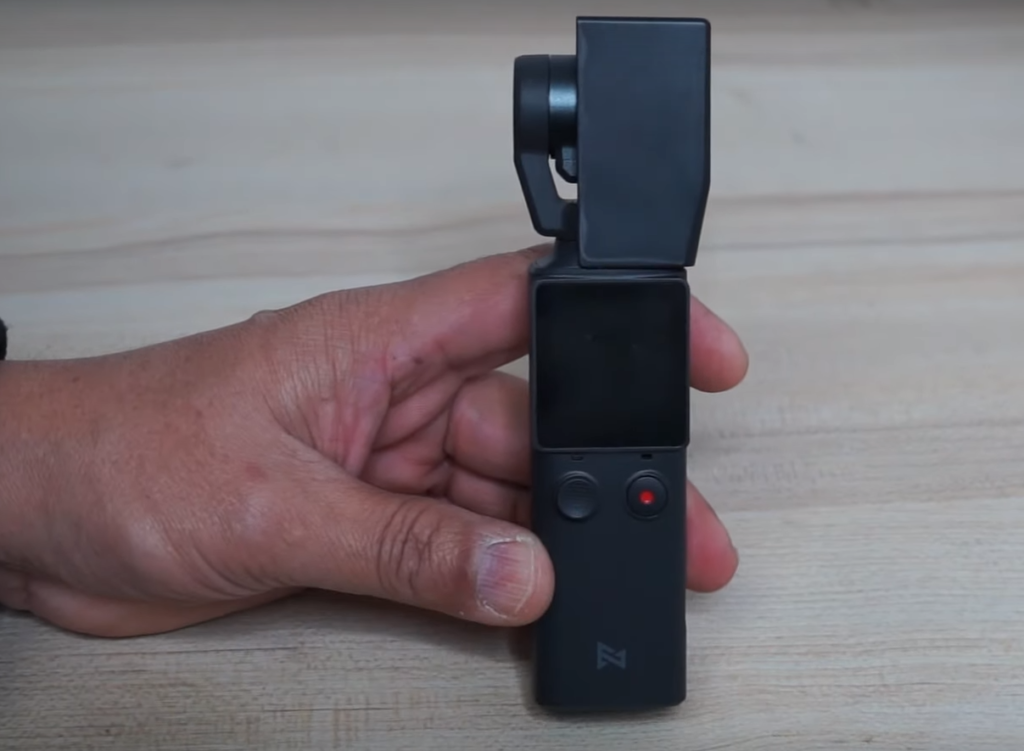
The models have such a similar appearance that it immediately becomes clear who spied on whom the main design details. In general, the devices are very compact (fits easily in the palm of your hand), so it's hard to believe that they have a full-fledged mechanical three-axis gimbal inside. As for the Osmo Pocket, it was initially an attempt to transfer a successful quadcopter module for use on the ground. Years of development have done their job - a miniature sensor equipped with well-optimized software is able to surprise not only amateurs, but also advanced users.
The camera uses high quality materials as the main materials, including ABS plastic, which has a black matte color. The dimensions of Fimi Palm are as follows: 3.05 x 2.27 x 12.70 cm. That is, the novelty has a length less than modern smartphones, as well as an acceptable width and depth, which allows it to lie comfortably in the hand without the risk of slipping. The camera weighs only 120 grams, which is also impressive.
At the top of the device (at the top of the three-axis gimbal) there is a 12 megapixel sensor. This arrangement makes the videos very smooth. Also below is a small 1.22-inch touchscreen display. The screen resolution is 240 × 240 pixels, which allows you to view the captured photos and videos directly from the device. By the way, the screen brightness of 600 nits is very pleasing - even in sunny weather the picture is clearly visible.
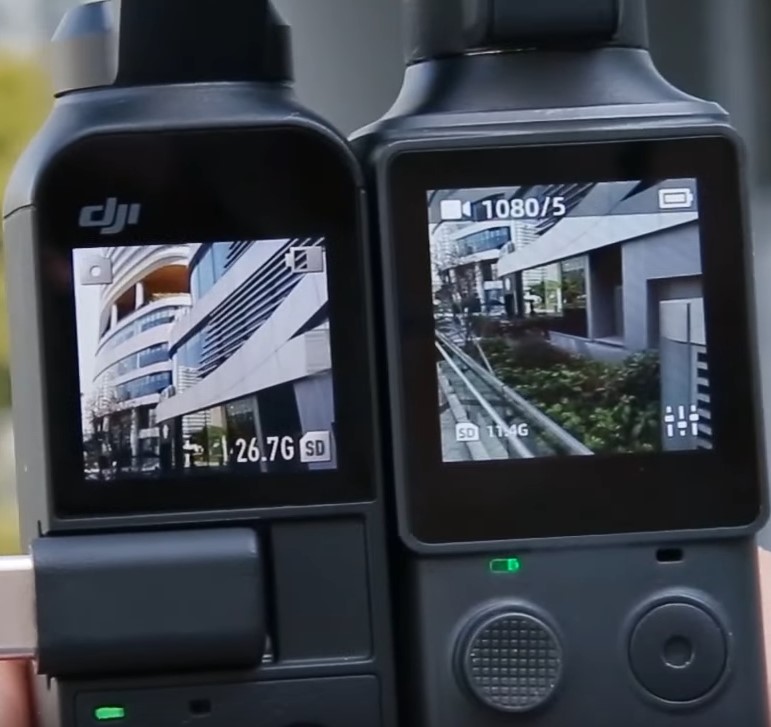
Below the screen is an LED indicator that shows the battery level. A microphone jack perched beside it. All camera control is carried out using the power button, video recording button and joystick (five positions). It is worth noting that the bottom of the device has a Type-C charging port. There is a 6.35 mm (quarter inch) tripod hole on the back. On the right is an additional microphone with noise reduction function, as well as a slot for a memory card. For those who need really high-quality sound, there is a 3.5 mm microphone jack.
As for the Osmo Pocket, it has a similar arrangement of all elements. The only significant difference is the slightly smaller 1.08-inch screen, which, despite a slight reduction, looks tiny (however, this does not affect convenience too much - a matter of habit). But what you should pay attention to is the square aspect ratio of the screen. The fact is that when previewing, part of the picture will be cropped, and switching to the "correct" mode will reduce an already small image. Another drawback is the lack of a port for an additional microphone (the built-in one does not shine very much and is a usual "average").
Also, many cite as a plus DJI less weight of the device. However, this statement can hardly be called serious, because the difference in weight is only 4 grams (120g versus 116g).
Software and features
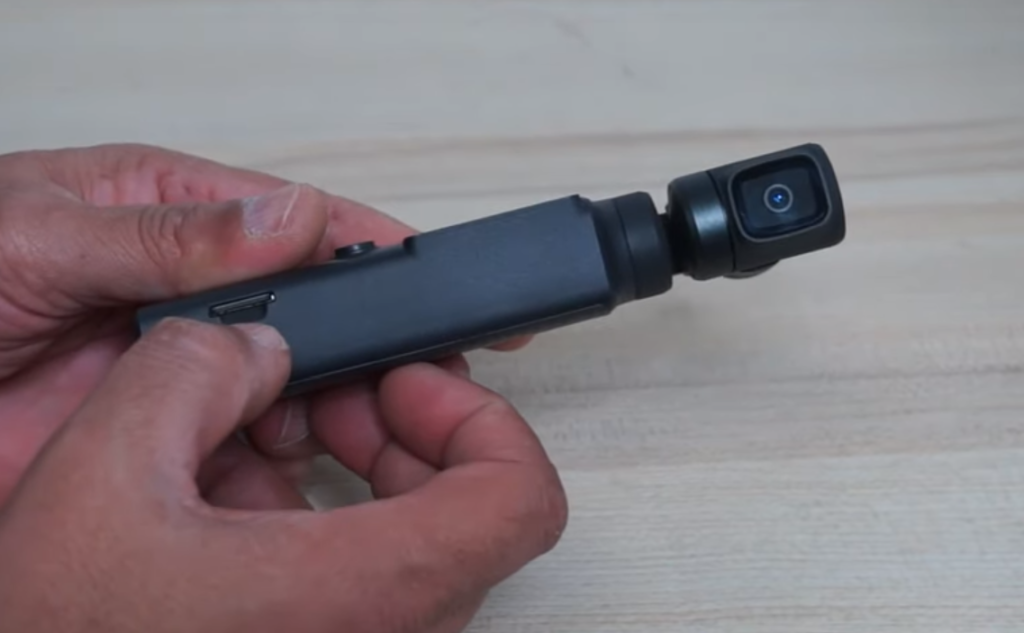
Perhaps it's better to start again with the Fimi Palm, since it has a 12MP sensor with a 128-degree viewing angle. Also, this "baby" can shoot video in 4K up to 30 fps. There is also panning in the range of -240 / + 60 degrees. The tilt angle is + -90 degrees, the swing angle is + -45 degrees.
The DJI model also has a 12 megapixel sensor (it is also used in smartphones and drones of the company). The viewing angle is 80 degrees, 4K video is supported at a frame rate of 60 fps. The pan range is -230 / + 50 degrees, the tilt angle is -95 / + 50, and the roll is + -45 degrees.
The bitrate of the models is the same - up to 100 Mbps. As a video, DJI outperforms its competitor with 60 fps, while the Fimi Palm plays out due to a larger viewing angle. However, a large viewing angle can cause a fish-eye effect, that is, some interference in the image, which requires more skill from the operator (however, in automatic mode, no problems arise, and a professional one in itself implies that the user has certain skills). In general, the camera should be selected according to personal priorities.
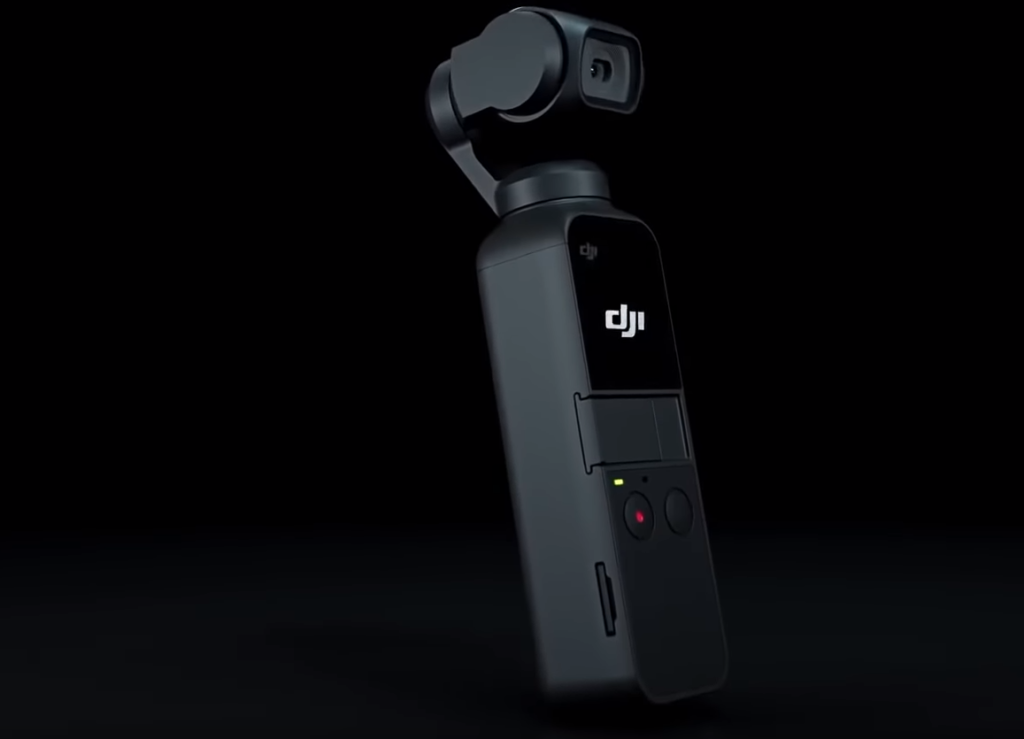
A very important plus of Xiaomi is the presence of built-in Wi-Fi and Bluetooth modules. This allows you to make deep settings of the device by connecting to a smartphone through a special application. For example, you can use the Story mode, which allows you to edit video files directly on your smartphone (apply effects, make transitions, add audio files, and much more). These features are also available on Osmo Pocket, but you will need to use additional accessories to do so.
Shooting and more about sensor capabilities
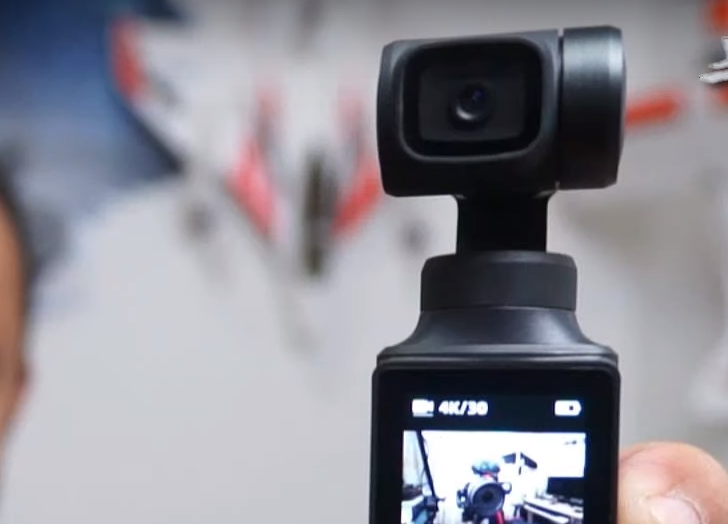
FIMI has four preset shooting modes, including Tracking, Full Lock, FPV and Pitch Lock. Of the interesting, the function stands out that is able to recognize a person's face and keep track of it constantly in the frame (relevant when moving). The camera also has the following options:
- Slow motion;
- Photo (JPG formats);
- Hyperlapse (accelerated video recording with stabilization);
- HDR;
- AE / AW (professional photography that involves working with the brightness of colors);
- Panorama;
- Night mode;
- Approximation (3x and 8x);
- Slow motion.
Added to the advantages of the camera are excellent stabilization (better than the competitor) and an excellent viewing angle. However, when it comes to night photography, DJI takes the initiative, so this should be considered when purchasing.
DJI Modes:
- Photo (JPG & RAW formats);
- Video resolution 4K (with a frame rate from 24 to 60 fps) and Full HD (up to 120 fps);
- Slow motion (big crop!);
- Time-lapse (moving the lens from point A to point B);
- Panorama.
The lens has an aperture of f / 2.0, which is not very good, but this decision was dictated by the desire to reduce the device as much as possible. Interestingly, the camera supports gesture control. However, in practice, this is convenient only in automatic mode, when delving into the settings, you should use a smartphone (but in the latest updates there is the possibility of correcting the professional mode without a phone), since there are really many settings and they significantly change the operation of the device. For example, when recording video in a flat D-Cine profile in manual mode (with control of shutter speed and ISO sensitivity), the layering of interface elements will become difficult, because it is easy to get confused in gestures due to the small screen.
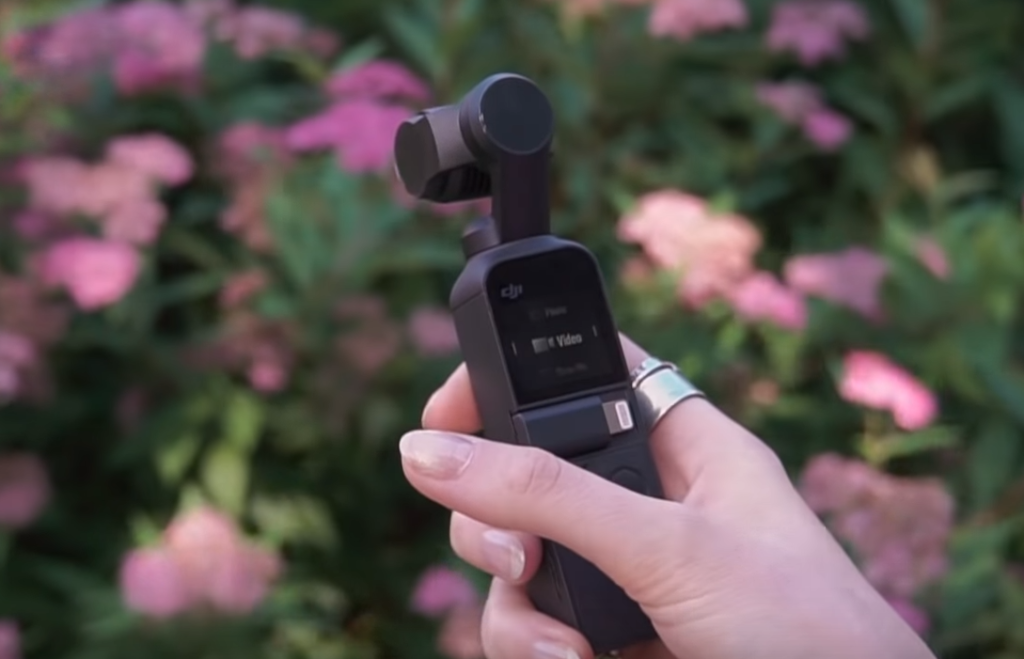
A separate feature of Osmo Pocket is the port to which the included adapters (USB-C / Lightning) are connected. This is how you can connect the phone to the camera, although the fixation is not very tight and the main advantage of the camera is lost - compactness. By the way, one of the positive aspects is the huge number of accessories that greatly expand the capabilities of the camera, as well as the ability to mount into a GoPro system. But there are also downsides - DJI is not shy about putting quite high price tags on its accessories, although third-party manufacturers are adjacent to quite competitive alternatives.
Autonomy
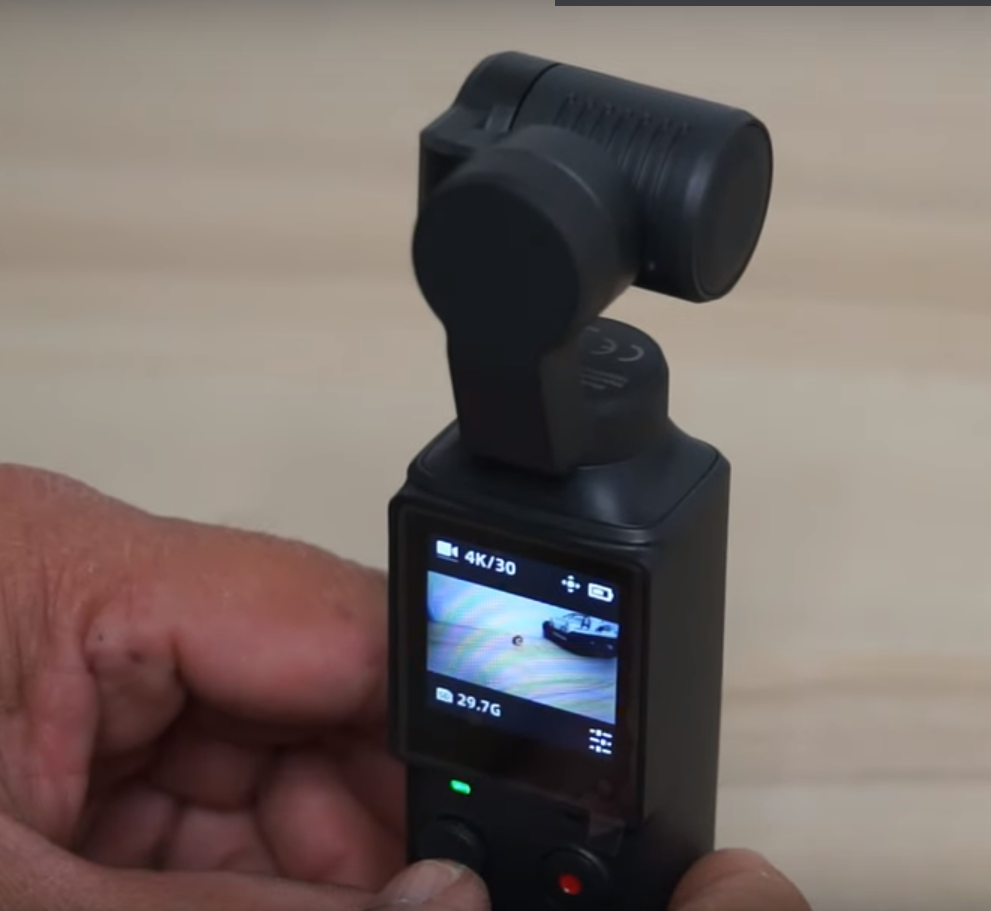
The battery life for any mobile gadget is almost the main parameter, because they are bought specifically for work in conditions of impossibility of recharging. However, today this problem is completely solved at the expense of power banks, but a good built-in battery will never be superfluous. It is worth noting here that both reviewers demonstrate good battery life, significantly outperforming their competitors.
Xiaomi understands the needs of customers well, and therefore took a ready-made solution and simply made it better. As a result, Fimi Palm received a 1000 mAh battery.According to the developers (which, in general, corresponds to the realities), one charge is enough for shooting in Full HD mode (30 fps) up to 4 hours. When you turn on the 4K mode, the time decreases to 1.5 hours, which is very good considering the size of the device.
Osmo Pocket is slightly inferior in battery life, with a built-in 875mAh battery. The time for one full cycle is a little over 2 hours (actually about 130 minutes) when recording video in 4K.
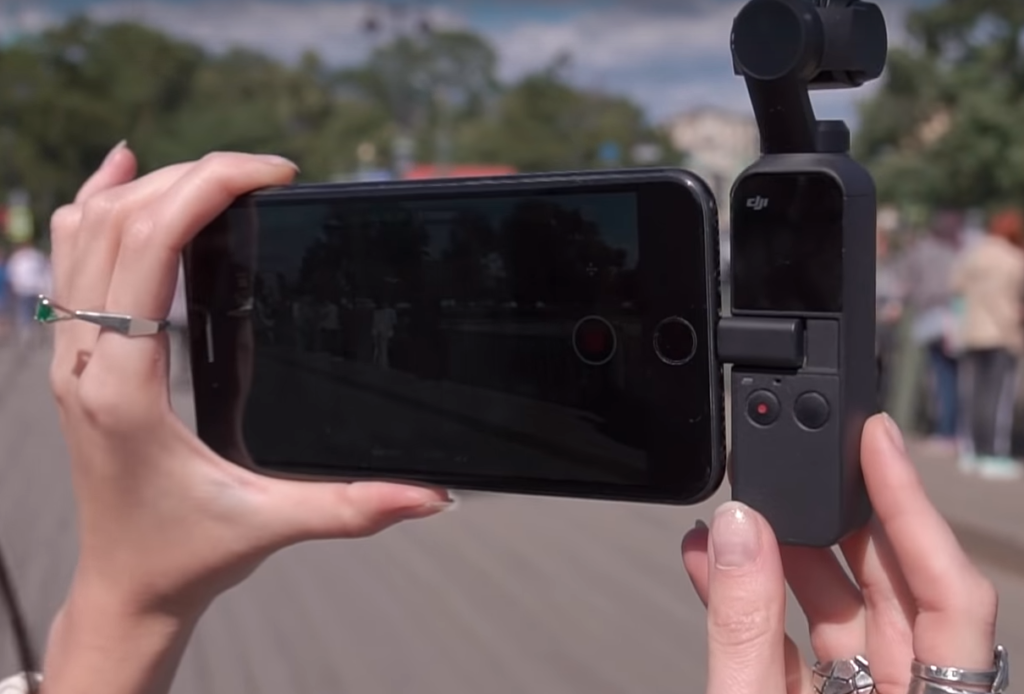
As you can see from the review, the autonomy of both cameras is in order, but the owners still advise you to always carry a power bank with you to avoid unpleasant situations.
Summing up
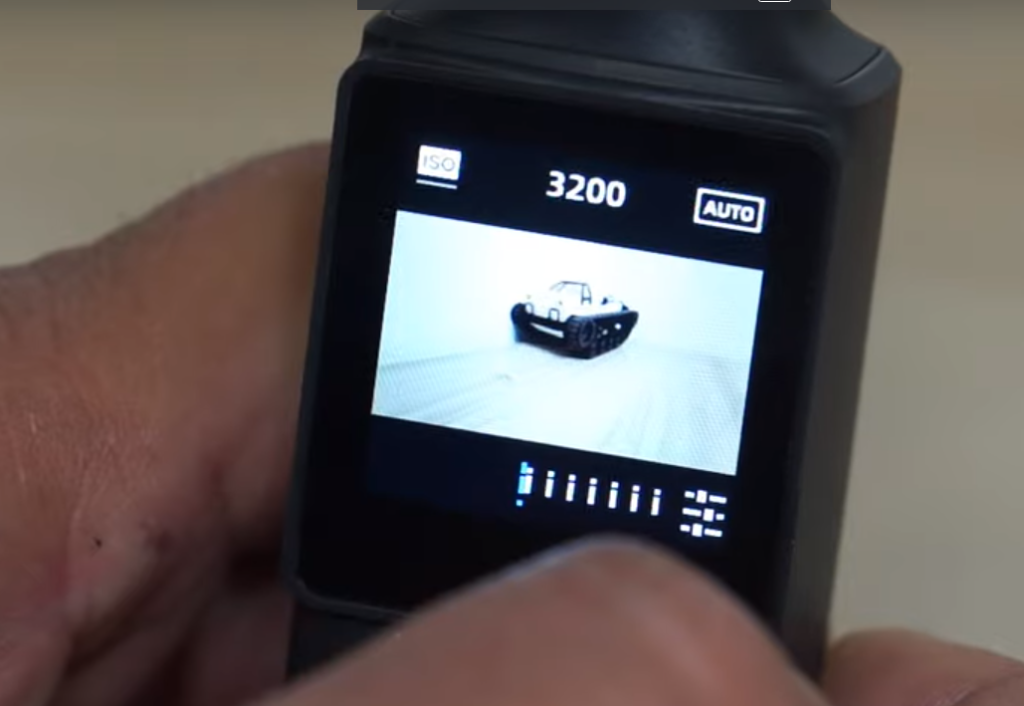
One of the most popular questions about these cameras, is it worth buying at all or is it just a waste of money? The owners of these devices unanimously say that it is worth it, and any model is suitable for a start, because they are initially better than any smartphone. In addition, such a device allows for a certain perspective - it can always be improved with additional accessories or used as an additional tool for professional photography.
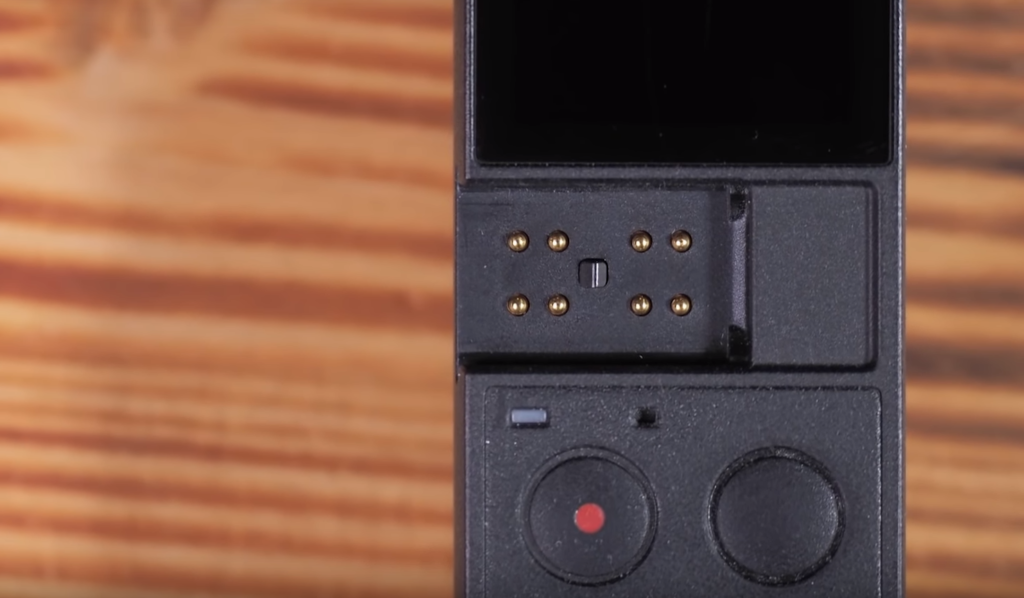
Speaking about which of the cameras is better, you need to decide on the priorities - excellent stabilization, wireless modules and a wide angle of view, or a high frame rate and good results when shooting at night. However, for beginners, Fimi Palm will still be preferable, at least due to its lower cost, and the camera's characteristics are very attractive.
So, Fimi Palm:
- Miniature;
- Wide viewing angle (128 °);
- Shooting 4K video;
- The presence of a physical joystick for control;
- Touch screen with the ability to preview;
- 1000 mAh battery (up to 4 hours of operation);
- Support for Bluetooth and Wi-Fi without additional modules;
- Tripod connector (quarter inch);
- Good tilt angles;
- Weight (120 grams);
- Many modes and flexible settings;
- Additional noise canceling microphone;
- Ergonomic body - fits easily and is fixed in the hand;
- Excellent video stabilization;
- Attractive cost;
- Simplicity of automatic mode.
- No Lightning connector;
- Content is saved only in jpg format;
- No support for 4K 60 fps;
- Not very good at night.
And finally Osmo Pocket:
- Shooting 4K video at 60 fps;
- Touch screen, preview capability;
- Quite good autonomy;
- Compactness;
- Good angles of inclination;
- Supports JPG & RAW formats;
- Weight (116 grams);
- A huge number of settings (however, a beginner can easily get confused in them);
- Ease of use;
- Reliability;
- Lots of third party accessories;
- Good stabilization;
- Working with content right in the application;
- Night shooting;
- Automatic mode is very simple;
- There are USB-C and Lightning connectors.
- Cost;
- Lack of built-in Bluetooth and Wi-Fi modules;
- No physical joystick (and touch gesture control is not very convenient in professional mode);
- Main microphone of average quality;
- "Squareness" of the screen and its dimensions.
Conclusion: Both cameras show excellent results in their price range and have many fans, and therefore there is no need to doubt their quality. In addition, the devices are very small in size, have good autonomy and can easily cope with a variety of tasks, and therefore, you can find application for these accessories even with professional equipment. When choosing, you should focus more on your own needs, because the cameras are largely similar and differ only in some key points.
new entries
Categories
Useful
Popular articles
-

Top rating of the best and inexpensive scooters up to 50 cubic meters in 2020
Views: 97661 -

Rating of the best materials for noise insulation for an apartment in 2020
Views: 95022 -

Rating of cheap analogues of expensive medicines for flu and colds for 2020
Views: 91750 -

The best men's running shoes in 2020
Views: 87680 -

Top ranking of the best smartwatches 2020 - price-quality
Views: 85091 -

Best Complex Vitamins in 2020
Views: 84801 -

The best dye for gray hair - 2020 top ranking
Views: 82406 -

Rating of the best wood paints for interior use in 2020
Views: 77202 -

Ranking of the best action cameras from China in 2020
Views: 75269 -

Rating of the best spinning reels in 2020
Views: 74827 -

The most effective calcium supplements for adults and children in 2020
Views: 72462 -

Top rating of the best means for male potency in 2020 with a description
Views: 68296

